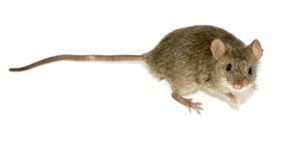When I encounter my cat fixated on specific locations in my kitchen, her behavior shows me that she has heard some mice in those areas. In fact, mice have been attributed as a reason that cats became companions to humans. Mice start gathering and reproducing so cats followed the food source and hunted the rodents, thus endearing themselves to humans, who were storing food for their own use. However, new evidence described in Scientific Reports has shown that mice have been associated with humans even before grain storage was widespread. In fact, by making our dwellings comfortable, we also created an inviting place for mice to live.
Continue reading “Uncovering the Origins of the Commensal House Mouse”neolithic
Expanding the Plague Family Tree: Yersinia pestis in the Neolithic
In recent years, scientists have been able to refine their molecular tools to resurrect ancient DNA from human graves and determine that yes, Yersinia pestis was the causative agent for the Black Death in the 14th century and the Plague of Justinian in the 6th century. As more and more human graves have been uncovered, their DNA has revealed many secrets that scientists even ten years ago were unable to discover. With the ability to sequence entire genomes of bacteria that died with their hosts hundreds and even thousands of years ago, researchers are exploring the rise and possible spread of Y. pestis. Each new member sequence adds to the Y. pestis family tree, pinpointing the origin of this bacteria as it diverged from its ancestor Y. pseudotuberculosis. Peering into the past, scientists have been able to track down a strain of Y. pestis from individuals in a Swedish passage grave that is basal to known strains and that the authors of a Cell article suggest has interesting implications.
This pathogenic journey into history started by analyzing ancient DNA data sets from the teeth of individuals present in a communal passage grave in Gökhem parish, located in western Sweden, for any disease-causing microbial sequences that might be present. Y. pestis was flagged in one 20-year-old female dated 4,867–5,040 years ago. The bacterial sequences from this individual, named Gok2, were more closely aligned with Y. pestis than the Y. pseudotuberculosis reference genome.
Continue reading “Expanding the Plague Family Tree: Yersinia pestis in the Neolithic”When Did Cats Become Companion Animals?
I am unabashedly a cat person, heavily influenced, I suspect, by the ever-fluctuating population of cats that roamed the family farm. Most of these outdoor cats were skittish around humans, but sometimes there were friendly female cats with a litter of kittens that were fun to chase, pick up and stroke. While the farm’s clowder of cats would eagerly await table scraps my mom would put out in the evening, there was plenty of opportunity for the felines to hunt vermin around the farm. It is this function—rodent control—that may be the reason that many of us share our homes with cats. One hypothesis to explain the association between cats and humans is rodents were stealing from human grain stores and cats could control rodent populations. However, there was not much data to confirm this hypothesis. Recent archeological evidence from China seems to support this view of cat domestication as reported in the Proceedings of the National Academy of Sciences. Continue reading “When Did Cats Become Companion Animals?”
Autopsy Results of a 5,300-year-old Murder in the Italian Alps
A Neolithic man who died a violent death high in the Ötztal Alps has been thawed for the first time in 5,300 years, and his autopsy is revealing new clues as to how he lived and died. The mummified body of the man, nicknamed Ötzi, was first discovered partially embedded in a glacier in September of 1991 by two German hikers, and due to the initial assumption that he was a modern corpse, was hastily extracted from the ice by Austrian authorities and taken to a morgue in Innsbruck. Only then did scientists learn Ötzi’s true age and historical significance as the oldest natural European mummy from the Copper Age.



